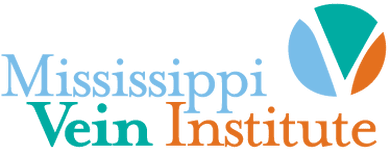Spider Vein Treatment in Jackson & Madison MS
Venulectasia

Spider vein treatments at MS Vein include state-of-the-art procedures such as laser treatment and sclerotherapy, both of which are minimally invasive. However, they are categorized as cosmetic procedures and, unless there is a severe underlying condition, are not typically covered by Medicare or even some health insurance.
Laser treatment uses intense pulsed light energy to damage the veins without harming healthy tissues. In contrast, sclerotherapy uses a fluid injected into the veins, causing irritation and swelling of the vein, resulting in its collapse and eventual absorption by the body.
The specialists at MS Vein will thoroughly assess your spider veins to determine the best possible treatment option. Breakthrough procedures such as the fiberoptic Veinlite have been our standard for surveying superficial varicose veins and their accompanying network of feeder veins before starting treatment.
It boasts a 150-watt light source with a specialized ring light design that enables us to view the veins within a broader and deeper context. No other equipment comes close to the accuracy that it provides for detecting feeder veins, those most often responsible for developing telangiectasia and spider veins.
We also make use of light and magnification filters whenever we perform spider vein injections for maximum accuracy.
Spider veins: Causes and Symptoms
Spider veins also referred to as venulectasia or telangiectasia, are the mildest forms of venous insufficiency. They are, in effect, varicose veins but smaller. Small groups of tiny blood vessels visible under the skin surface often look like spider webs, hence the name. They are usually visible on the face, lower legs, and thighs as red, blue, or purple discolorations. They can cover large portions of the skin but rarely cause any physical symptoms and are generally treated for cosmetic reasons. Studies show that around 30% to 60% of adult men and women are affected.
Spider veins are small blood vessels called capillaries. They are directly connected with the venous system and are usually caused by a backflow of blood in the veins. They may occur as isolated networks or associated with deeper and larger varicose veins. They cannot be classified as varicose veins because they do not protrude above the skin surface and do not need intensive medical treatment.
Spider veins are likely to be seen as one of three characteristic patterns: a spider-web pattern coming from a central point and radiating outwards, a tree-branch pattern, or a linear pattern that may present as a network of thin lines. Many doctors prefer to conduct tests whenever they see spider veins to rule out any underlying conditions and determine the extent of the situation, even if the patient does not complain of any physical discomfort.
The risk factors associated with spider veins include age, genetics, hormonal changes during puberty, pregnancy, menopause, obesity, and occupations involving extended periods of standing or sitting. Excessive sun exposure, especially in fair-skinned people, some injuries to the skin surface, the use of birth control pills, and hormone replacement therapy have been identified as risk factors, as well.
MS Vein’s Spider Vein Treatment: A Cut Above the Rest
At MS Vein, our specialists strictly adhere to all medical protocols to ensure every Venulectasia Treatment we offer is tested safe and effective. We also provide a high standard of care for all our patients; rest assured that you are in good hands. Call us now to request a consultation with our Venulectasia Specialists. We pride ourselves on giving you the latest in Venulectasia Treatment.



